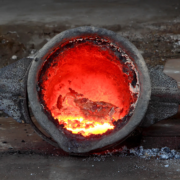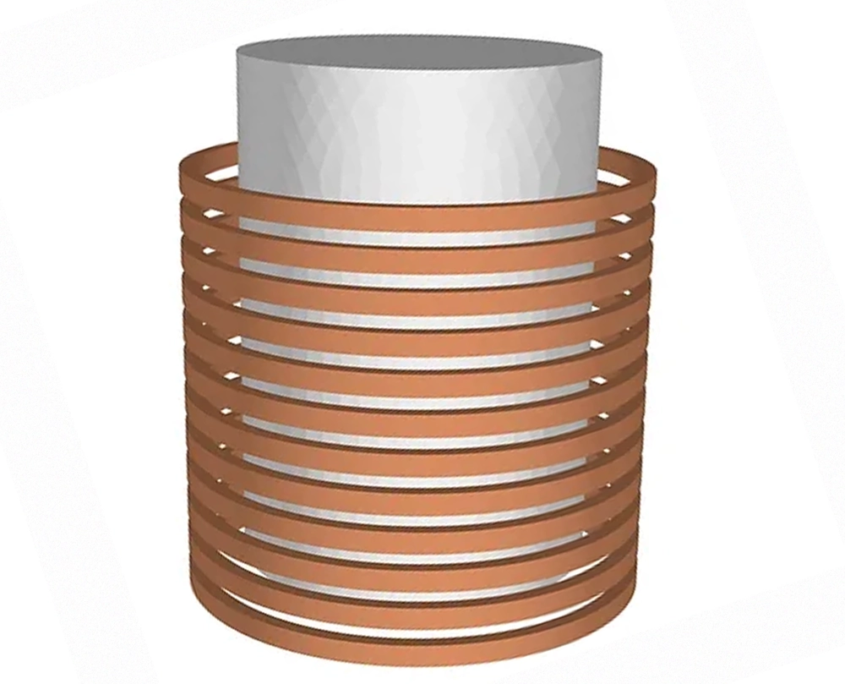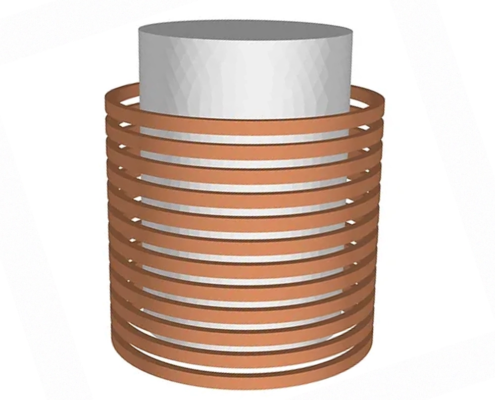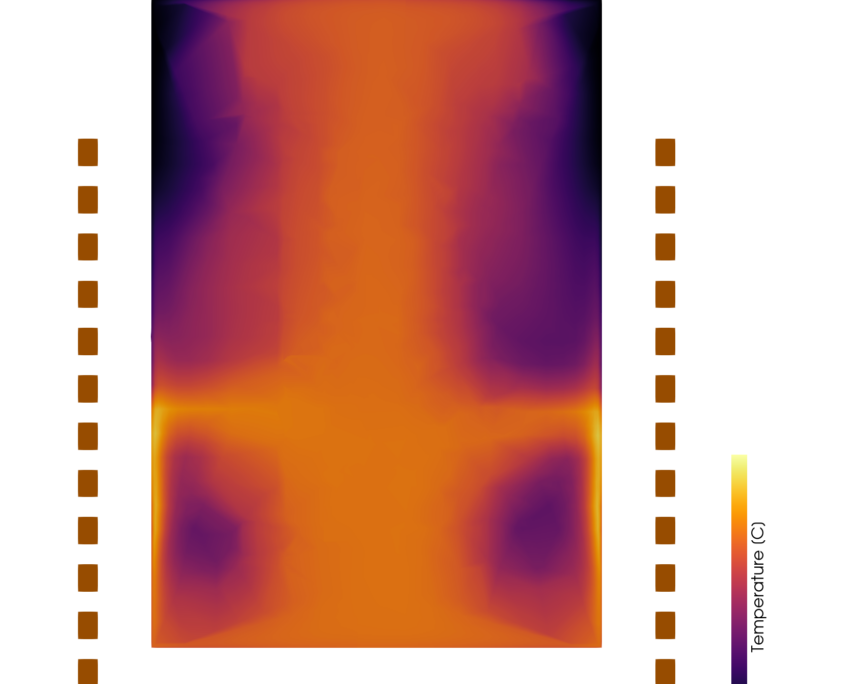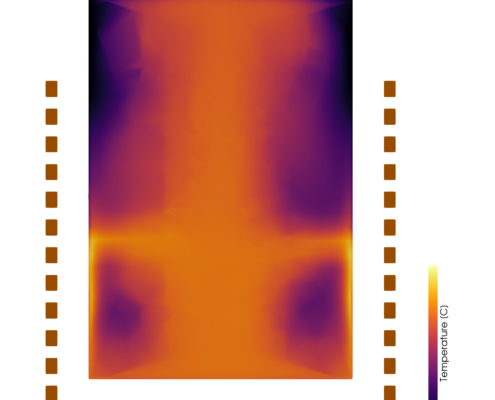Induction crucible furnace: case study
Simulation is a powerful tool for engineers working in the field of Electromagnetic stirring, melting, and pumping of liquid metals. It provides essential data on how electromagnetic fields interact with molten metals, enabling the design of more efficient furnaces, better control of the melting process, and ultimately higher-quality metal products.
In this case study we will simulate and analyze the induction crucible furnace using CENOS simulation software.
What is the challenge?
In industrial metallurgy, one of the critical challenges is ensuring uniform heating and mixing of molten metals, particularly in induction furnaces used for processes like melting and alloying. Achieving consistent temperature distribution and homogeneous mixing within a furnace filled with molten metal can be complex due to uneven heating and fluid dynamics.
A key challenge engineers face is designing electromagnetic stirring systems that can effectively move molten metal to avoid temperature gradients, prevent solidification, and ensure homogeneity in the final product. Without effective stirring, the liquid metal may not reach optimal temperatures uniformly, causing localized overheating or underheating, which impacts the quality of the melt. Additionally, traditional mechanical stirring methods are often unsuitable for high-temperature molten metals like iron, requiring non-contact solutions such as electromagnetic stirring.
In this specific case, the challenge is to create a system where the molten iron in a cylindrical crucible is efficiently stirred and heated using low-frequency electromagnetic induction to achieve uniform thermal distribution and proper mixing at 1550°C, with applied conditions of 250 Hz frequency and 20 kA current.
What is the solution?
The solution explored in this use case is the application of low-frequency electromagnetic stirring using a solenoid coil to alternate magnetic fields to enable molten metal movement within the crucible. The interaction between the induced electric current in the melt and the primary magnetic field of the inductor – creates the Lorenz force, which drives the metal away from the wall of the crucible.
The system consists of a 12-turn coil placed around a cylindrical furnace containing molten iron. This coil generates an alternating electromagnetic field when an electric current is passed through it, inducing eddy currents within the molten iron, which in turn causes the liquid to move.
The system was simulated using numerical methods to evaluate how electromagnetic stirring affects the temperature distribution, fluid flow, and overall behavior of the molten metal. The geometry of the furnace and coil was modeled, and a mesh was automatically generated, with refinement in the areas of the furnace to capture detailed flow and thermal phenomena. Refinement of the mesh is mostly to capture the area of penetration of electromagnetic field, the so-called skin-effect.
Simulation process:
- Initial setup: The coil is placed asymmetrically around the cylindrical furnace, containing liquid iron at 1550°C. A current of 20 kA at 250 Hz is applied to generate the electromagnetic field.
- Fluid dynamics and thermal analysis: The electromagnetic stirring generates two distinct vortices within the molten iron, driving the mixing process. The molten iron circulates vigorously due to the electromagnetic forces, with the formation of two larger vortexes at the top and two smaller ones at the bottom, as shown in the second image. This vortex structure ensures that the molten iron is continuously circulated and mixed. They appear as four vortexes in the cross-section. Moreover, it’s important to mention that those vortices are unstable, they are dynamically growing and shrinking, making the zone between upper and lower vortices very unstable – this is what leads to efficient mixing.
- Vortex formation and mixing: In the third and fourth images, we can clearly see how the molten metal moves within the crucible. The four vortexes are created as a result of the electromagnetic forces induced by the coil. The flow is asymmetrical, with the upper vortexes being larger than the lower ones, which is due to the position of the coil, as demonstrated in the first image. These vortices contribute significantly to the mixing of the molten iron, ensuring uniform temperature distribution throughout the material.
The first image of the coil shows the setup, where the copper-colored solenoid wraps around the furnace. The second image visualizes the temperature distribution and flow of molten iron, where colors represent varying thermal states (red for hotter regions and blue/purple for cooler areas). This visualization demonstrates how the stirring effect promotes even heat transfer and mixing in the molten metal.
The third image here, a top-down view of the furnace, illustrates the vector field of the molten iron’s flow. Here, we observe the complex motion within the liquid metal, with the arrows showing the strength and direction of flow. This further demonstrates the impact of electromagnetic stirring on ensuring uniformity within the melt.
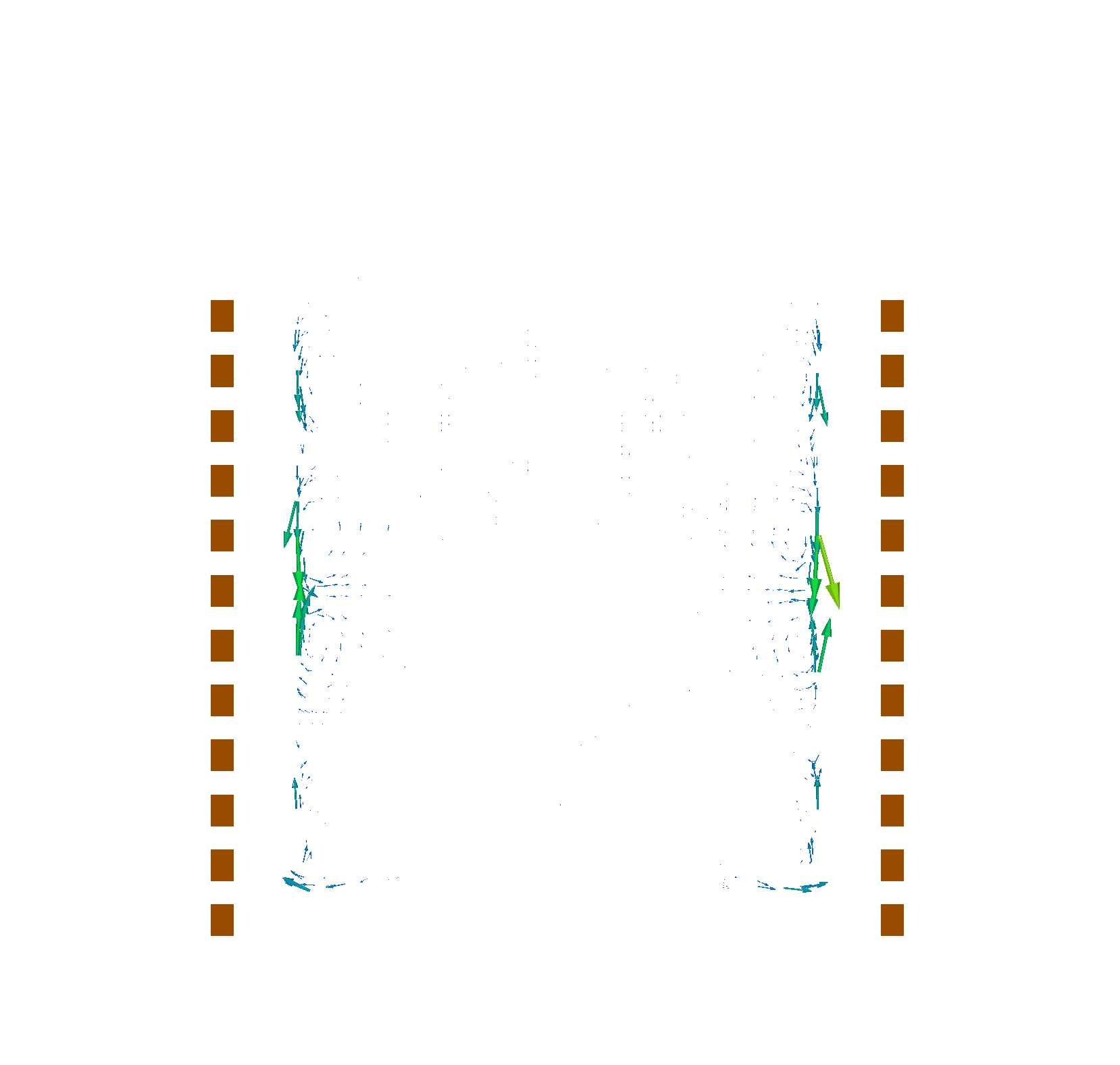
What is the result?
The result of this simulation is a well-defined and efficient stirring pattern within the molten metal, driven by the electromagnetic forces generated by the solenoid coil. The two-vortex system observed in the simulation is critical for ensuring even mixing and thermal distribution. As seen in the third image, the stirring motion efficiently circulates the molten iron, helping to avoid cold spots or temperature gradients that could negatively affect the quality of the melt.
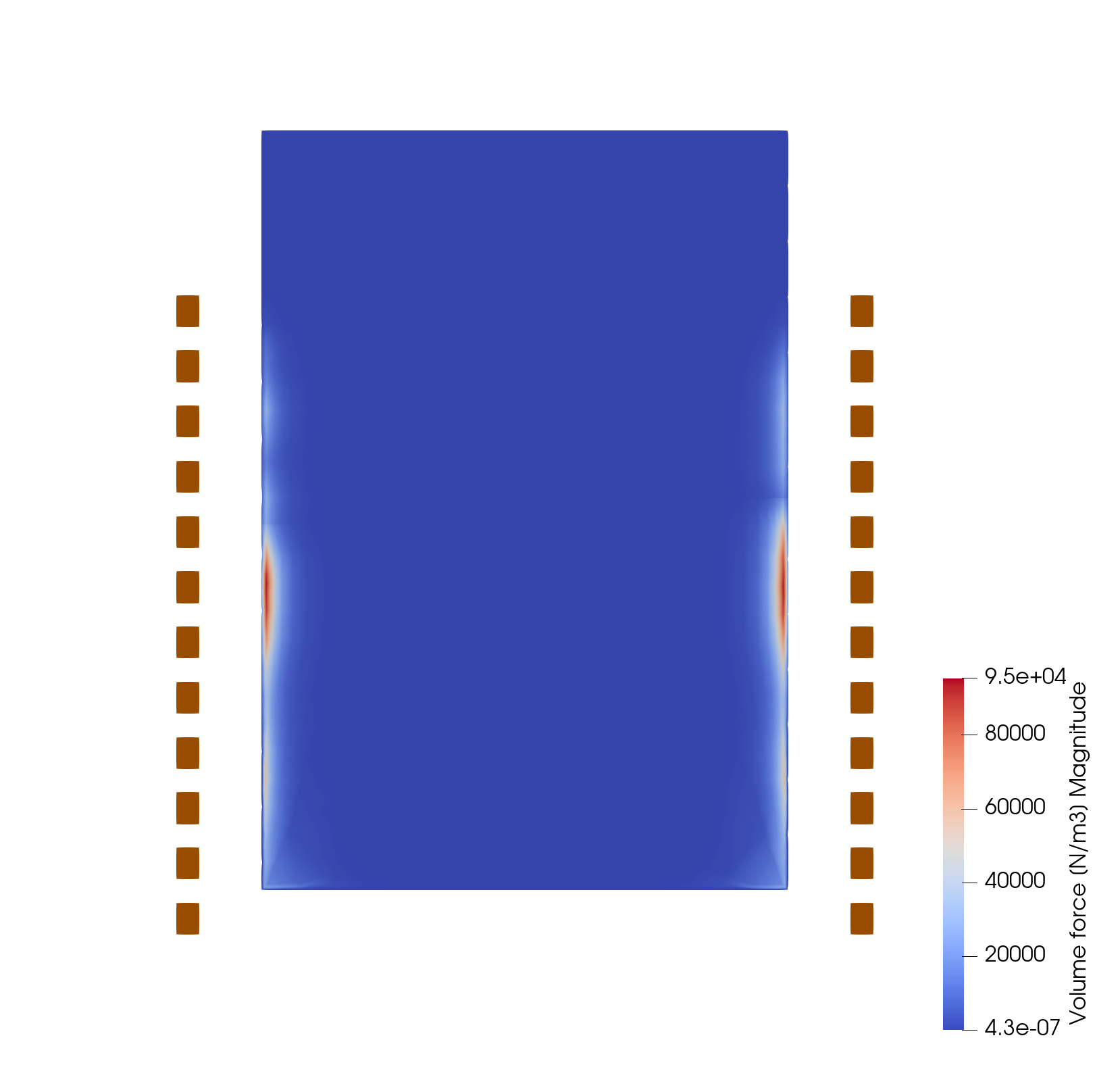
The upper and lower vortexes in the simulation demonstrate how the electromagnetic stirring system operates within an induction crucible. The top vortexes are larger due to the positioning of the coil, and this asymmetry ensures that the molten metal is thoroughly mixed from top to bottom. This process is essential for preventing the formation of hot or cold zones within the molten iron, ensuring uniform temperature and composition throughout the melt.
Why is this simulation useful for engineers?
This simulation gives valuable insights into the dynamics of electromagnetic stirring in induction furnaces. By modeling the fluid flow and thermal distribution, engineers can predict the behavior of molten metal in real-world processes, optimizing furnace design, coil positioning, and operational parameters to achieve the best possible results in metal melting and alloying.
- Optimization of furnace design: The simulation provides engineers with a tool to understand how different geometries and positions of coils and operating frequencies impact the fluid motion and temperature uniformity in the crucible. This is crucial for designing furnaces that can handle different types of metals and achieve consistent results.
- Efficiency in industrial applications: By using electromagnetic stirring, engineers can replace mechanical stirring systems that may be impractical or less efficient for high-temperature applications. This non-contact stirring method ensures that the molten metal is properly mixed, reducing defects in the final product.
- Improved product quality: With better control over the mixing and temperature distribution, the overall quality of the molten metal improves, leading to fewer impurities, more consistent alloying, and better final material properties.

